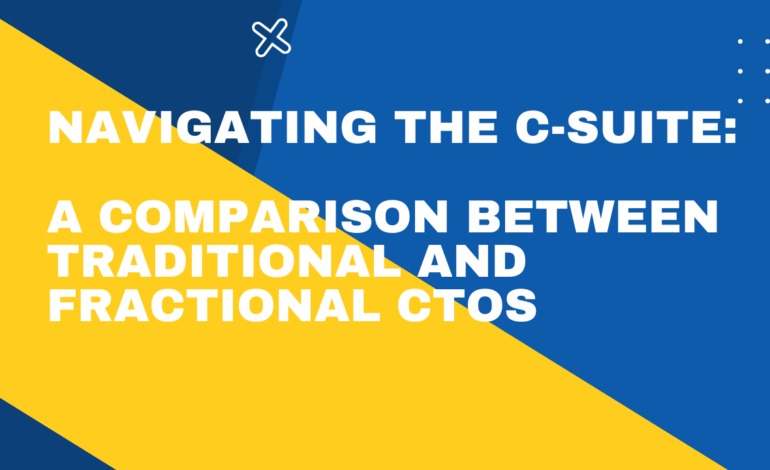Navigating the C-Suite: A Comparison between Traditional and Fractional CTOs

In the vast and ever-evolving landscape of technology leadership, two key roles have emerged at the helm of driving a company’s technological vision: the traditional Chief Technology Officer (CTO) and the relatively new concept of the fractional CTO. Both play pivotal roles in shaping an organization’s technological strategy but in slightly different capacities. Let’s delve into the comparison between these two roles and the unique advantages and challenges each brings to the table.
The Traditional CTO
A traditional CTO is a full-time, executive-level position within a single company. Their responsibility is to establish the company’s technical vision, lead all aspects of technological development, and make high-level decisions regarding technology and IT infrastructure.
Pros of a Traditional CTO
- Depth of Involvement: A traditional CTO is deeply involved in the company’s technology strategy and can fully focus on the organization’s needs.
- Consistent Leadership: Their full-time presence provides consistent leadership and direction for the technology team.
- Deep Understanding: They develop a profound understanding of the company’s technology infrastructure, making them better equipped to make strategic decisions.
Cons of a Traditional CTO
- High Costs: Hiring a full-time CTO can be expensive, especially for startups and smaller businesses.
- Potential for Over Specialization: In smaller companies, a CTO might not have enough high-level strategic work to justify their role, leading to over specialization in certain areas.
The Fractional CTO
A fractional CTO, on the other hand, is a part-time role where an individual serves as the CTO for multiple companies simultaneously. This role has emerged as a cost-effective solution for startups and small businesses that require strategic technological guidance but can’t afford or justify a full-time CTO.
Pros of a Fractional CTO
- Cost-Effective: Fractional CTOs provide strategic tech leadership at a fraction of the cost of a full-time CTO, making them an ideal choice for startups and smaller companies.
- Diverse Experience: Since they work with multiple companies, they bring a wide range of experiences and perspectives, leading to innovative solutions.
- Flexibility: They offer flexibility in terms of time commitment, adapting to the changing needs of the company.
Cons of a Fractional CTO
- Divided Attention: Since their time is split between multiple companies, they might not be available whenever needed.
- Limited In-Depth Knowledge: They may not have the same depth of understanding of a company’s tech infrastructure as a full-time CTO.
- Potential for Conflicts of Interest: Working with multiple companies in the same sector could lead to conflicts of interest.
Summary
the choice between a traditional and fractional CTO depends on a company’s specific needs, size, and resources. A traditional CTO may be the right choice for a larger organization with complex technology needs, while a fractional CTO could be the perfect solution for a startup or small business looking for strategic tech leadership without the high costs. As the technological landscape continues to evolve, so too will the roles and responsibilities of technology leaders.
-
U.S. Women’s Rugby Puts Forth Valiant Effort in New Zealand Loss, Will Advance to Bronze Medal Match

U.S. Women’s rugby Olympics Puts Forth Valiant Effort in New Zealand Loss, Will Advance to Bronze Medal Match
-
Simone Biles’ Gritty Performance and Resilience at the Paris 2024 Olympics

Despite an injury during the Paris 2024 Olympic gymnastics qualifications, Simone Biles led the U.S. team with determination and resilience
-
Venezuela Votes in Historic Presidential Election: A Pivotal Moment for the Nation

Venezuelans are voting in a presidential election with potentially seismic political implications,


